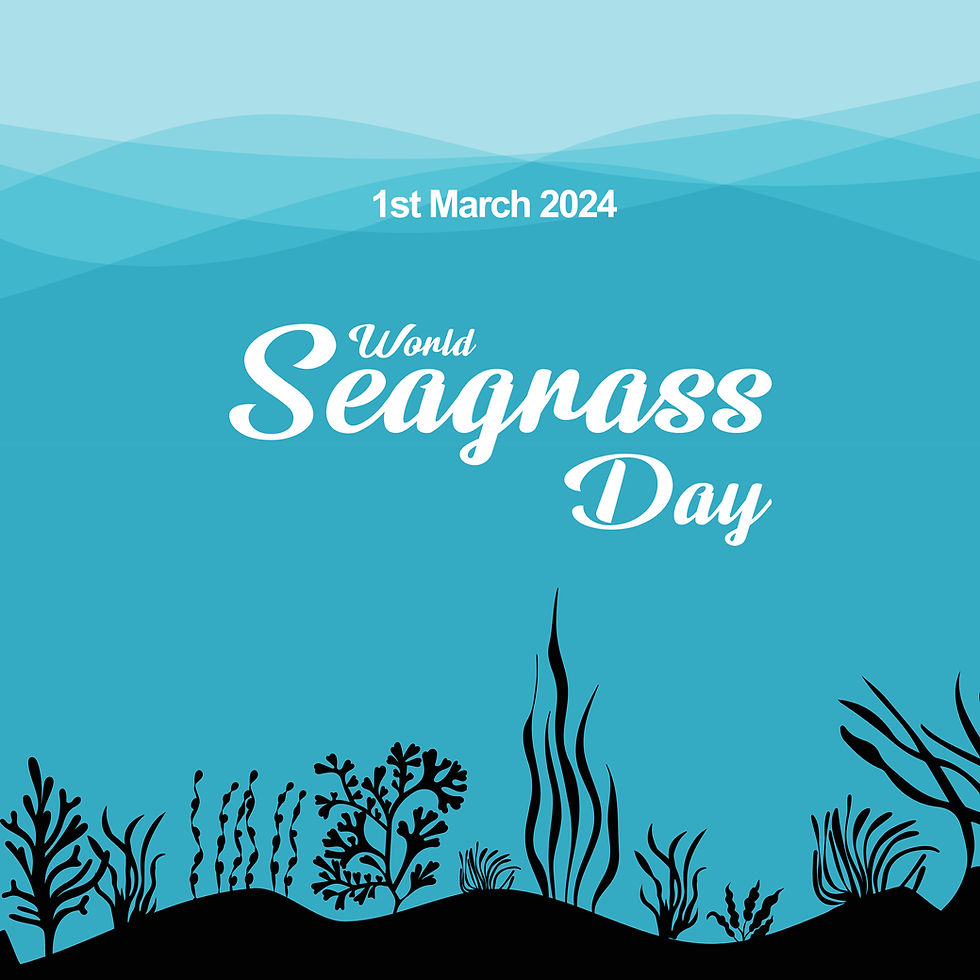Exploring the Secret Gardens of Seagrass
- Feb 27, 2024
- 2 min read
Updated: Mar 6, 2024
As we delve deeper into understanding the intricate ecosystems that sustain life on our
planet, one often overlooked hero emerges from the depths: seagrass. With World
Seagrass Day fast approaching on March 1st, it's the perfect time to shed light on this
under-appreciated marine marvel and recognise its crucial role in our environment.

Seagrass may seem inconspicuous at first glance, resembling nothing more than a
simple underwater plant. However, its significance cannot be overstated. These
flowering plants (they are not seaweed) form dense underwater meadows along
coastlines across the globe, acting as vital ecosystems for a myriad of marine life.
Seagrass meadows fringe the shores and the depths of Pumicestone Passage.
Beneath the swaying blades of seagrass, a bustling community thrives. From tiny
invertebrates to large marine mammals, such as the elusive Dugong. countless species
rely on these habitats for food, shelter, and breeding grounds. Juvenile fish seek refuge
in the intricate root systems, while crustaceans scuttle among the leaves, forming the
base of complex food webs.
In addition to supporting marine life, seagrass meadows play a crucial role in mitigating
climate change. They are among the most efficient ecosystems for carbon sequestration, storing vast amounts of carbon in their soils. They are an invaluable ally
in the fight against rising CO2 levels and ocean acidification.
Beyond their ecological significance, seagrass meadows offer tangible benefits to
coastal communities. Their extensive root systems help stabilize sediments, reducing
coastal erosion and buffering the impacts of storms and waves. Furthermore, they act as
natural water filters, improving water clarity and quality.
Despite their importance, seagrass meadows face numerous threats, including coastal
development, pollution, and climate change. As we observe World Seagrass Day on
March 1st, it's crucial to raise awareness about the plight of these ecosystems and take
action to protect and restore them.
How you can help
Things we can all do to protect seagrass:
Support conservation efforts by getting involved with BIEPA’s local citizen science projects, like Dugong Diaries and Bribie Island BioBlitz.
Contribute to a global seagrass citizen science project by downloading the Seagrass Spotter app (find on Apple App Store or Google Play Store) and start snapping and sharing photos.
Practice responsible boating and fishing by minimising your impact on seagrass habitats. Follow boating regulations, use sustainable fishing practices and avoid anchoring in areas of seagrass meadows.
Take steps to reduce your carbon footprint and minimise pollution to help mitigate the impacts of climate change and water pollution on seagrass ecosystems.
As we celebrate World Seagrass Day, let's not only appreciate the beauty and diversity of these underwater meadows, but also commit to protecting and preserving them for
generations to come. After all, the health of our oceans, and indeed our planet, depends
on it.
.png)




Thank you for sharing this interesting article. I did know most of it but not all. Most enlightening.